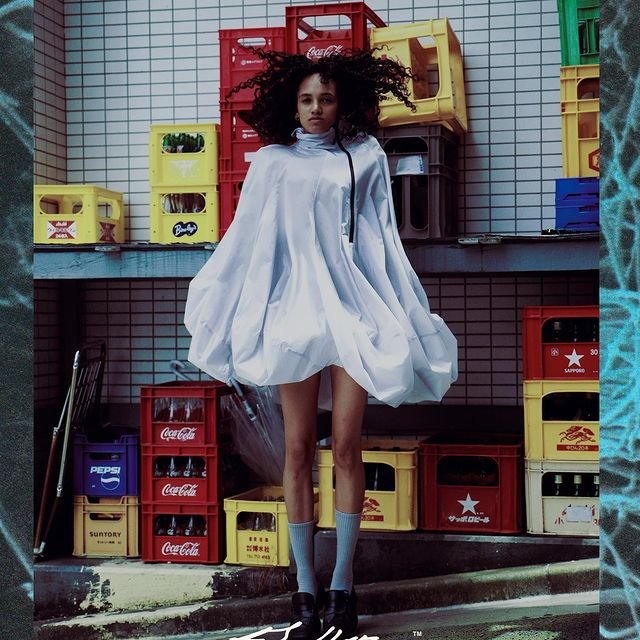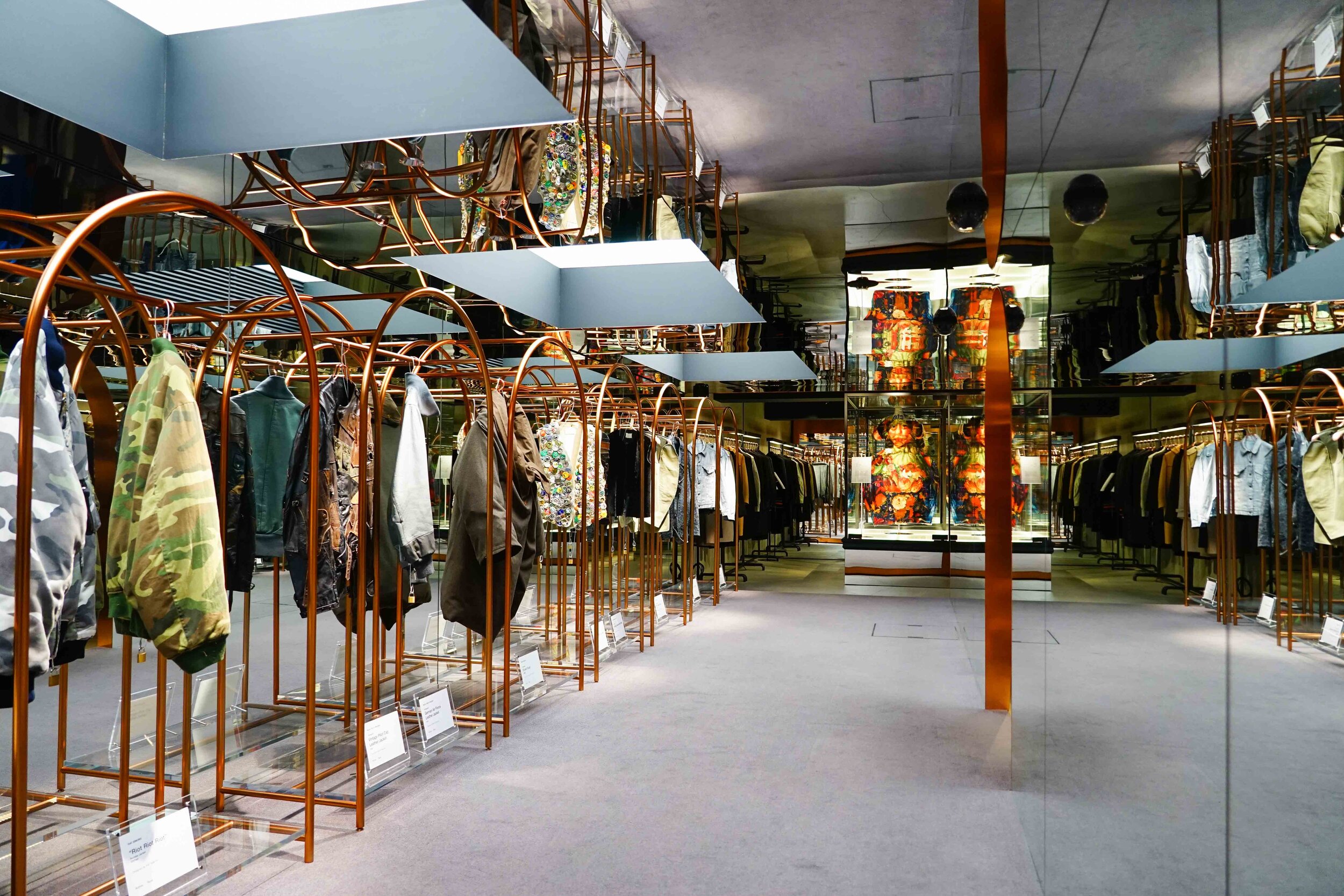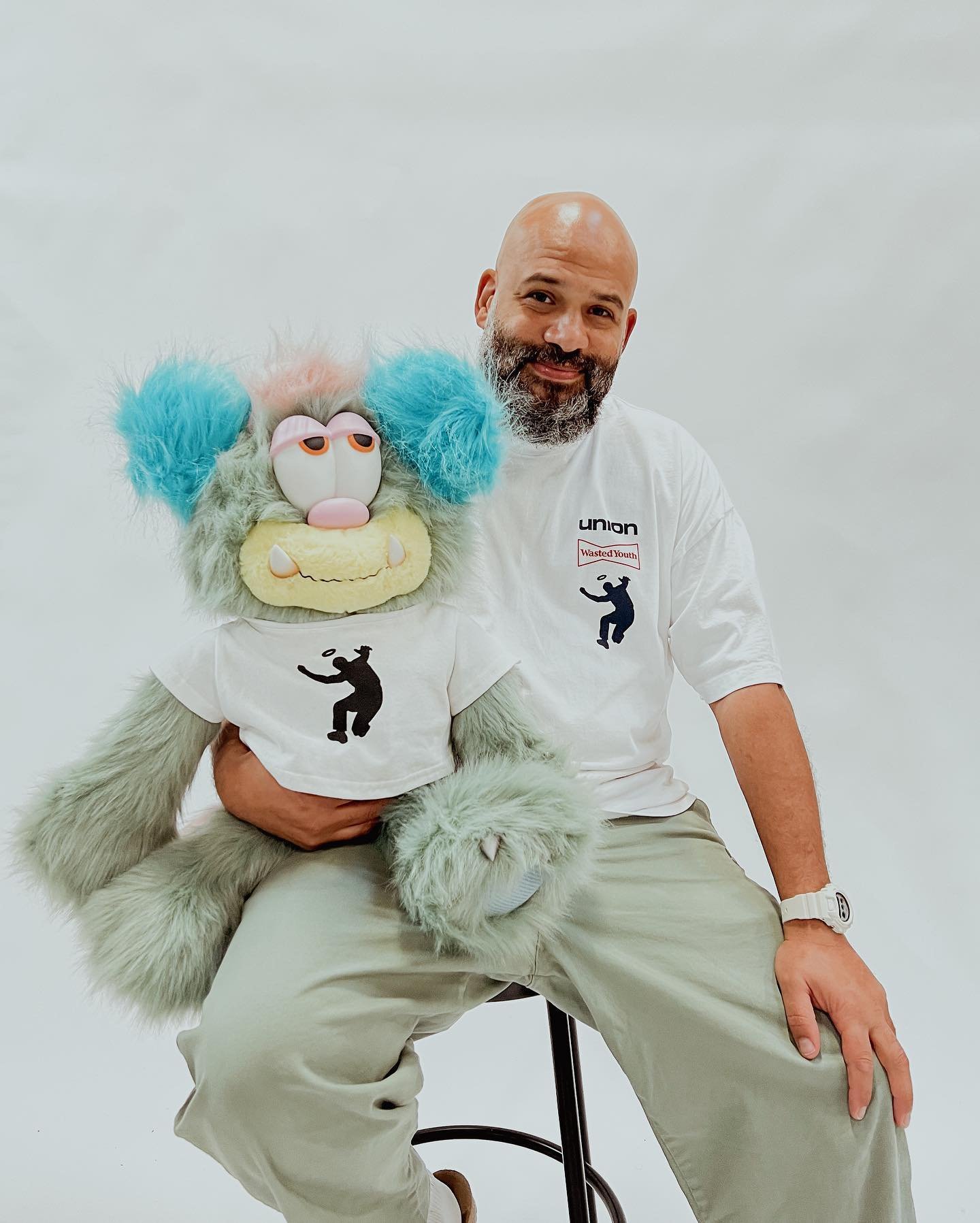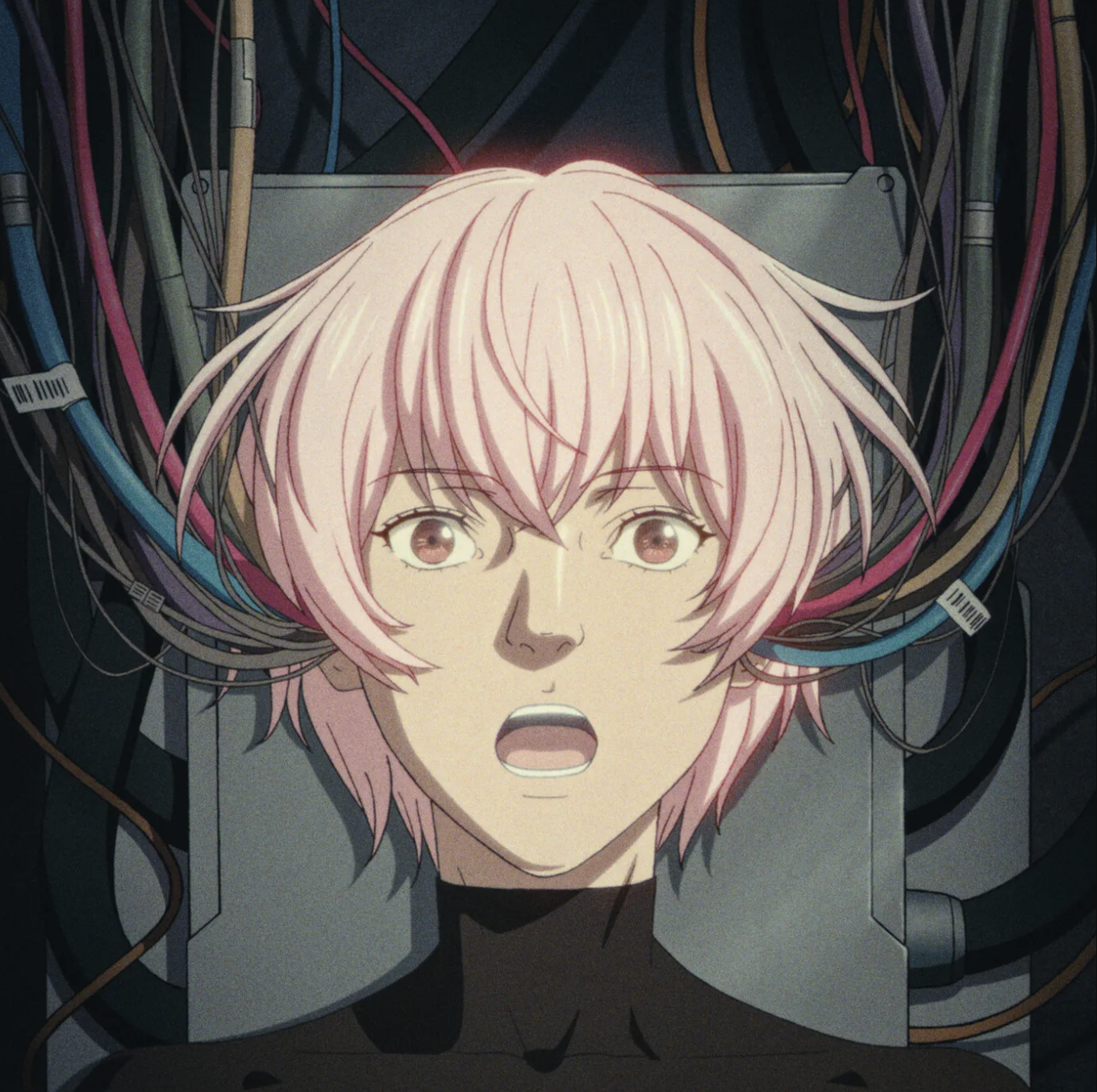Pushing the Needle Forward: Meet GutterTM’s Casper Wright
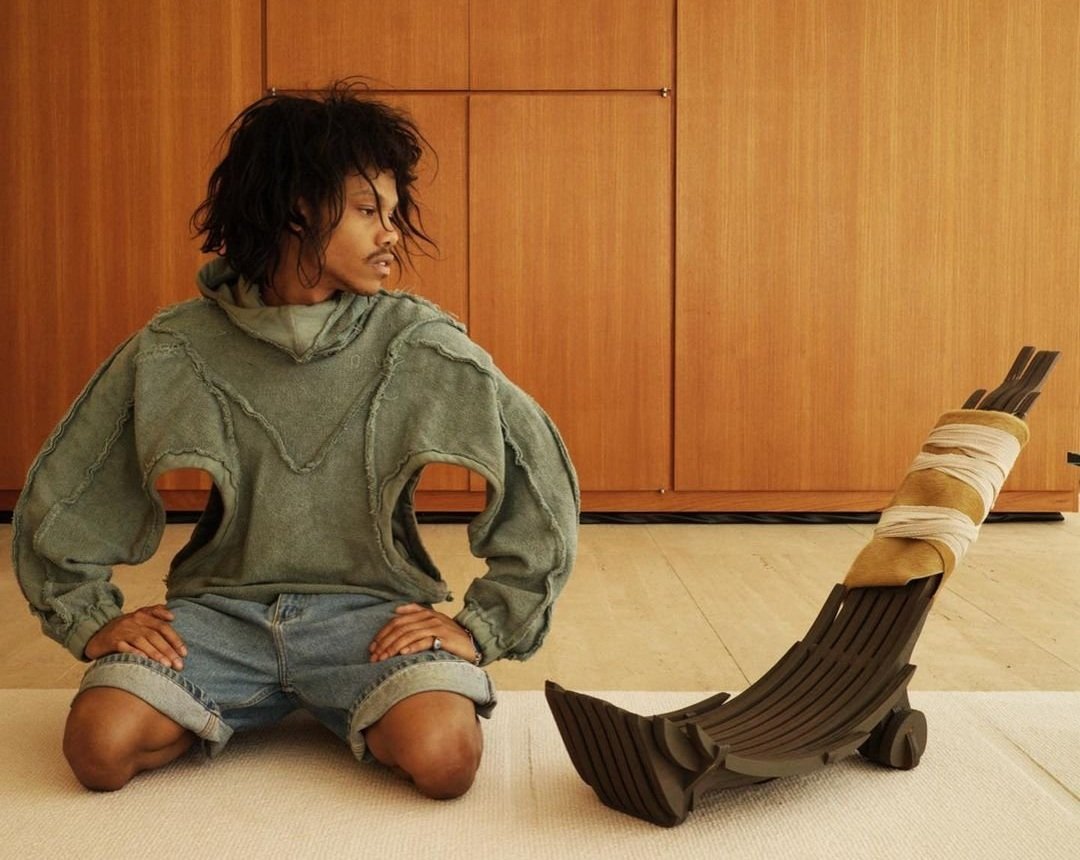
Chicago-based designer and multi-disciplinary artist Casper Wright is a true artisan. His label, GutterTM, weaves a nuanced visual language, paying homage to archival fashion with a very personal brand of rugged futurism. His designs are artifacts of life as it is lived and breathed, and of Casper’s own movement through time and space.
Sometimes it feels like a brand is born every minute, and in some ways, this is great: it represents the democratization of design and production resources. But there is a lot of noise on our feeds, saturated by brands that sometimes rely on unsustainable and harmful production practices - or are simply lacking in quality design or execution.
Luckily, some young pioneers are doing things properly, bringing things back down to earth and what really matters: truly inspired thinking, quality design, and an artisan-level commitment to the craft.
One of them is Casper Wright. Based in Chicago, Casper is a young and prolific designer. Completely self-taught, his fluency in pattern-making and design is beyond his years. He spends a lot of time in Tokyo and has a deep sense of Japan and its sartorial life both past and present. His ideas and their execution are incredibly long-cooked - you can tell immediately from his work, and the way he talks about it.
Casper launched his label GutterTM in 2016, which soon gained attention from the likes of Hypebeast and Complex, and can be spotted on A$AP Rocky in Highsnobiety’s recent cover story.
GutterTM, in Casper’s own words, is ‘for those in motion and not standing still’. Casper’s designs are at once both intuitive and meticulous - they have feeling sewn succinctly into them. Built to age gracefully but last forever, they are thoughtful, detailed. Always playing with the dialectic between art and fashion, but nonetheless always constructed with a strong sense of practicality in mind. They are real and for real life.
‘Genus’, Casper’s latest capsule collection, embodies this particular energy with sculptural and dynamic silhouettes. The Medusa Poncho features voluminous sections that balloon and settle as they fill with the wind and air. Crafted from Scottish salvage denim, the kinetically panelled “Khelda” Moto Jacket is made for ‘rougher play and safer falls’. Graphic tees and Tabi Sox playfully punctuate the collection.
The Medusa Poncho. Photography by João Barreiros.
Casper represents a generation of young, up-and-coming designers who are doing something special, something different: casting out on their own, overcoming fear and risk, and doing what they do with meaning, heart and boundless creativity.
sabukaru caught up with Casper to slow down and understand what GutterTM is really about - and talk his personal philosophy, the learning curves of growing up, and his bonds with the creative community in Tokyo.
Can you first please introduce yourself to the sabukaru network?
My name is Casper Wright. I am an artist and designer based in Chicago, Illinois. My focus is the architecture of clothing and liberating people through design that can stand the test of time.
For someone who may not have heard of your brand, how would you describe it?
For me, I see my brand Guttertm, as a sort of rebellion in a setting of conformity. And something audacious, kind of like the Pharrell song, “You Can Do It Too” - it’s seeing the world on your own terms. It’s an amalgamation of cultural nuances, while still playing with “futuristic” ideas, at the same time paying homage to the movements and artists that have inspired me, I would describe it as something timeless, more than a painting, but a phenomenon and product that can be enjoyed universally. With an emphasis on practical reverse utilitarianism and high craftsmanship. I would describe it as something for those in motion and not standing still.
You have been designing since such an early age, gaining worldwide recognition even from the early age of just 19 - How would you describe your journey so far?
It’s been quite humbling. Through design, I’ve not only got to meet some amazing people who have become lifelong friends and collaborators, but I’ve also gotten to know myself through this expression. For me, it feels like I’m always at the beginning of my journey. I do enjoy the chemical reaction that happens when someone puts on one of my pieces. It’s kind of like it enhances them and illuminates the person that they already are, which is extraordinary and unique. This feeling keeps me going.
GutterTM Jackie Blazer and Crow pants. Photography by João Barreiros.
You are self-taught, which is impressive in itself. Why did you decide to take this route rather than seeking a more formal form of education?
The short answer is audacity, but funny thing is I actually went to school for fine art, but I just didn’t feel that I could connect in the same way. I want it to be useful. I wanted to create artifacts that were not just on the wall, but products someone could tell stories with. I’ve always had this kind of ability to deconstruct and reconstruct and deconstruct and reconstruct again, it doesn’t matter if I was applying it to a painting, a chair, or a jacket. I’ve always kind of been able to see the line and I follow that. I’ve also had really good craftsmen around me. In my “family,” there are many artists, designers, sewers, and garmentos, if I may say. I have been educated just not in a traditional sense, but I think this gives me my edge, it’s like ignorance is bliss. Looking at things this way allows me to innovate where others might only follow a path paved. I’m a heavy reader, and I look at a lot of images and I’m good with my hands. I was a carpenter from 16, building furniture from just sheets of wood, applying this process to fabric came seamlessly, with precision and dedication of course, to reaching the ideal. I see patterns differently than a teacher could teach me to.
How is GUTTER inspired by your time growing up in Chicago?
In juxtaposition to Japan, which sometimes can feel kind of like a Wonderland with no worries, Chicago has constantly show me the harsh realities of what life can be. This teaches me survival tactics. Artists that come from here are extremely resourceful, and they have to be because there isn’t much of an art community. But we’re resilient, so this pushes us to create our own. Being here has shown me how to make something out of nothing. It’s showing me how to really get things done and this is a skill that I carry with me everywhere that I go.
The brand seems to really invigorate styles: things are stretched, oversized, torn, distressed. Why did you take this very artisan and personal approach to design?
I myself am a little torn and distressed. The design is a reflection of this point. It’s kind of like handmade pottery. I want to see that fingerprint. I want to know that there’s feeling there, I want people to feel like the clothing is alive so I don’t treat it like too much of an artificial thing but there’s kind of an Alejandro Jodorowsky “The Holy Mountain” in my head going on in my head kind of like shit to the gold alchemical process. That brings these inanimate objects to life. It’s not necessarily a beautiful process, but in the end, you get something that is real.
How would you describe the crossovers between your fashion and art?
I ponder this question a lot in my head. I’m often asking myself if I'm a fashion, designer and artist. I don’t know. For me, art has nothing to hide. You can see all of its flaws and we appreciate them. This is something I’m always questioning in my work. Fashion can be sculptural and art can be practical. I think they exist together, pushing back and forth.
From the GutterTM 2019 Collection
We can see you take inspiration from manga and anime with your Neon Genesis Evangelion-themed Eva Blazer and Trouser combo. why do you take inspiration from this medium?
Since I was young, I’ve always been very inspired by anime I find myself in the characters, and even some of them like my big brothers in my mind. I want to pay homage to them so that maybe people who haven’t seen it or understand it can still appreciate it through my lens. Neon Genesis, it’s such a beautifully drawn animation I revisit a lot.
Do you have any particular favourite anime and mangas?
I really enjoy Naruto. I have like two tattoos from it. I also like Ghost In The Shell, Mob Psycho, Ergo Proxy, That Time I Got Reincarnated As A Slime. I could go on, but a manga that I really love is Ultra Heaven.
We have read that you started reselling archival pieces you owned such as Margiela, Yohji Yamamoto, Raf Simmons, and Undercover to get by. Were these brands an influence on you in your own designs, and if so in what way?
Definitely, these brands were influential to me. From Margiela I learned to let my clothes speak for themselves. Jun taught me how to think outside of the box, but inside of it at the same time, he showed me how to fully explore a subject and creatively pay homage. From Yohji, I learned charisma and cigarettes are life haha. And from Rei I learned how to fight for my dreams against all adversity.
You were listed as one of Complex's Top Brands To Watch in 2019 - how have things changed since then?
Being in that space was so informal because it didn’t feel like a space that I was supposed to be in and you know my work doesn’t necessarily fit in that crowd. I think that it’s showed how particular I am but it also showed me that my ideas can connect even with that kind of consumer. Since then, I’ve had many peaks and valleys, and I’ve learned from them all. Since then, I’ve settled more into who I am, versus following someone else’s.
You mentioned then how you still had not found your definitive “style” yet and are still finding your voice. Do you think over the years this has been defined?
No, I think I’m still discovering it. I’m good at starting from nothing and I’m planning on keeping it that way. Maybe that’s my ‘style’- no style.
you are very focused on discovering your own lane. How have you done this, with GUTTERTM and everything else you do?
It turns out there was no lane for what I do so I had to pave it. I follow my intuition. I do this by sticking to my principles as an artist, and with Gutter and I do this by taking my time to understand what and why I’m doing it. This has allowed me to find my own type of consistency, it’s like sticking to the side street versus walking on the main road. Eventually, I’ll get where I’m going. And I enjoy all of the twists and turns along the way.
Your connection with Tokyo and its creative has been growing strong over the last few years. Can you tell us more about you and the city?
My love for Tokyo is endless. I think me and the people I’ve connected with there share a common objective, and that is pushing the needle forward and having fun doing it. I believe that a lot of pioneers are coming out of Tokyo, especially in design and art. That runs through me as well so when I come around, it’s like I have to make noise.
Two of our favourite designers here, Kosuke from Jian Ye and Agnes Kruel, have close ties with you as well. How did these relationships develop?
Those are my brothers in this game, our friendship going back maybe six years now. And through the pandemic and everything we’ve always maintained communication - we both have collaborations together, set to come out soon. We keep each other sharp. Kosuke for his unwavering discipline and consistency inspires me daily to go harder. And Agnes I’ve never met a mind like him. We understand each other, and respect and love each other like brothers. Our conversations are typically too long hahaha but filled with lots of inspiration, and we teach each other and inspire each other. They are part of the “family” I mentioned earlier.
How does your work relate and connect with theirs, and why do you think the three of you form such a special relationship?
I think the thing that connects our work is how forward it is, we see each other's struggles and we see each other’s potential. So for me, I’m always constantly trying to explore that in any way that I can, whether it be through collaboration or conversation or just a dap, pound and hug. The relationship was so organic. I actually met them on the same night I was talking to Kosuke six years ago on the street when we noticed each other. Agnes overheard my fashion spiel and joined in the conversation bestowing some of his philosophy. It was so organic, and these are my favourite types of relationships. I think we all want the same thing for each other: success.
What are your goals for the next few years? Both professionally and personally?
In the next few years, I’d like to permanently be in Japan, working to move my studio. There, continue to create some installations and build my company into something with true integrity.
Personally, maybe one day I’ll make a R&B album. I think that would be really fun. I want to continue to grow and express myself.
And finally, being someone so clearly passionate about the creative industry, what would you like to be remembered for?
If I could just inspire, that would be enough for me. It’s not so much about the industry as it is about real people and community, and I would like to be remembered as someone unwavering. I want to show kids who grew up like me that the possibilities are only limited by my own mind.
Words by Thea Jowsey-Cavanagh.

